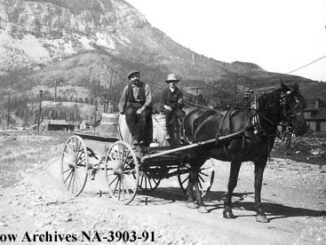For this month’s history feature, we’re sharing ten of the oldest buildings in Alberta and where you can see them.
Father Lacombe Chapel (1861)
In 1861 Father Albert Lacombe and Bishop Tache established a Roman Catholic Mission in what is modern-day St. Albert. With the help of the local Métis community, Father Lacombe built this small log chapel. Not long after, a bustling community soon followed complete with a hospital, an orphanage, and one of the first schools in the Northwest. Today you can find the Father Lacombe Chapel, fully restored to what it looked like in the 1860s, sitting atop Mission Hill as the oldest building in this province.
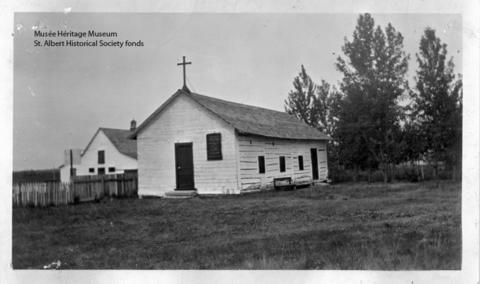
Clerk’s Quarters at Victoria Settlement (1865)
George McDougall established the Victoria Mission on the banks of the North Saskatchewan River in 1862. The Hudson’s Bay Company (HBC) arrived a few years later and established a trading post. The last remaining structure from the original HBC post is the Clerk’s Quarters. This building played an important role as it was the centre of the HBC’s activity and their interaction with Indigenous traders and local Métis settlers. You can still see the Clerk’s Quarters today as it’s part of the Victoria Settlement.
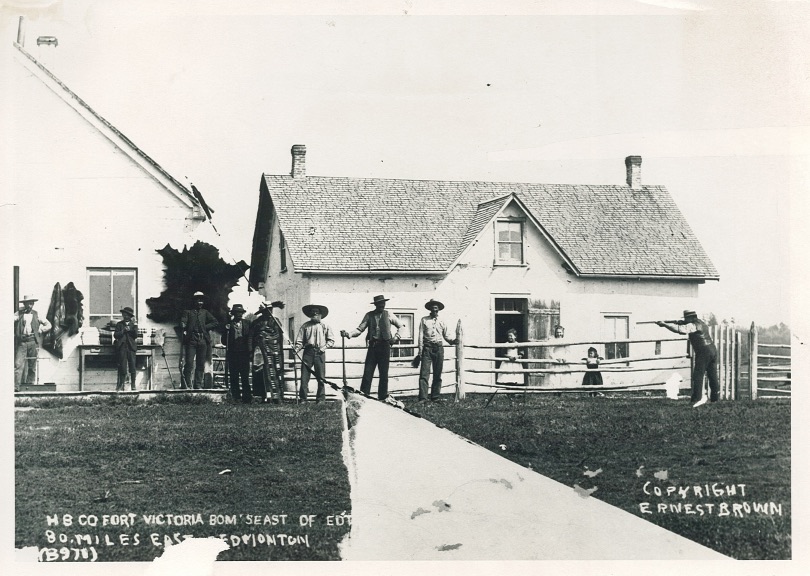
Chimney’s at Rocky Mountain House (1868)
Rocky Mountain House National Historic Site sits on the banks of the North Saskatchewan River, one of the original ‘highways’ to the west. In 1799 the North West and Hudson’s Bay companies established competing posts nearly side-by-side on this site. In the ensuing 76 years, a total of four forts were built and nine different Indigenous groups visited to trade their goods. All that remains of the original HBC fort are these two brick chimneys.
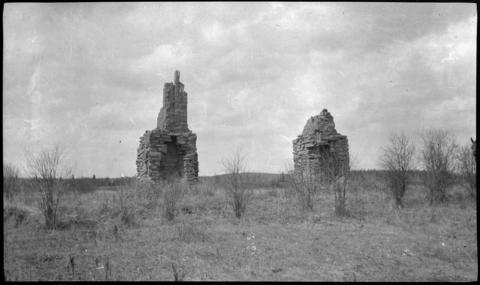
Hunt House (1876)
This small log structure sits near the confluence of the Bow and Elbow Rivers, just east of downtown Calgary. It is the oldest building in the city still on its original site. Soon after Fort Calgary was established, the Hudson’s Bay Company constructed a trading post nearby. The post had several auxiliary buildings, including the Hunt House, and was likely the residence for a freighter or interpreter with the HBC.
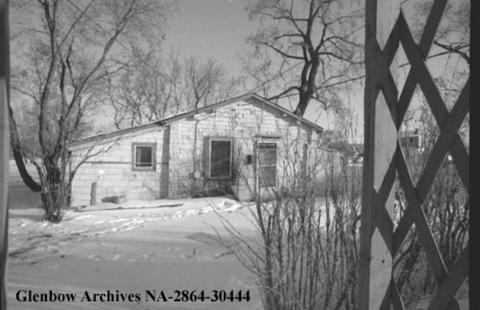
Card Pioneer House (1887)
Charles Ora Card, often referred to as ‘Canada’s Brigham Young’, was an American who founded Cardston, the first Mormon settlement in Canada. Not only was it home to Charles and his wife Zina, but the structure was also a guest house, a gathering space, and a community centre until Cardston became more established. Today the Card Pioneer Home remains on its original site and has been converted into a museum.
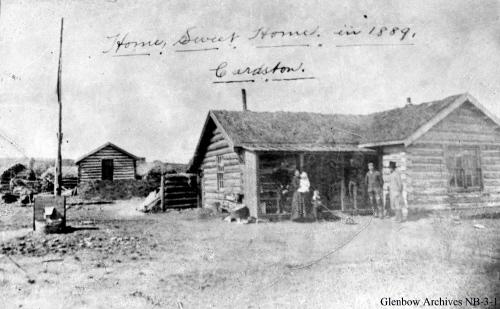
Lougheed House (1891)
This sandstone mansion was built by Sir James Alexander Lougheed, a long-serving Canadian Senator, and his wife Isabella for his family. Their home was originally called Beaulieu, meaning ‘beautiful place’ in French. During the Great Depression, the Lougheed’s were forced to choose between their downtown property and Beaulieu. They chose the former and the city took legal title of the home in 1934. After the Lougheed’s vacated the property, the structure had many different uses including a youth employment training centre, barracks for the Canadian Women’s Army Corps, and a blood donor clinic for the Canadian Red Cross Society. Lougheed House still stands in Calgary’s beltline district and was designated a National Historic Site in 1992.
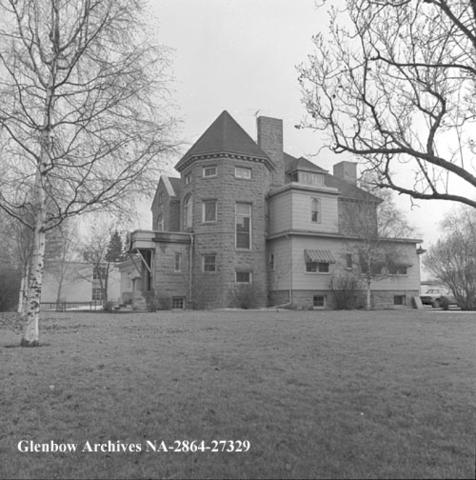
Ralph Connor Memorial United Church (1891)
Reverend Dr. Charles Gordon was a Presbyterian missionary who was tasked with providing services to the residents in Canmore, Anthracite, and Banff. When he arrived, no church had previous been established, so he set about constructing one, making this particular church one of the earliest Presbyterian churches in Alberta. Reverend Gordon also authored popular novels under the pen name, Ralph Connor. Today you can find the Ralph Connor Memorial United Church in downtown Canmore.
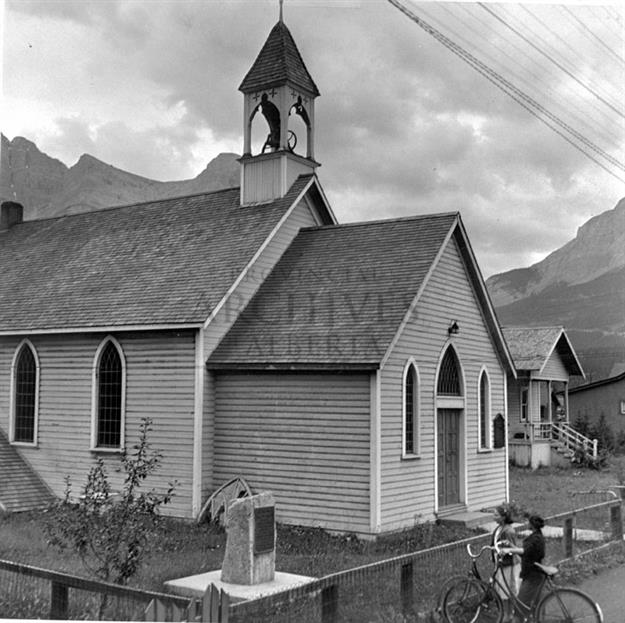
John Walter House (1875)
John Walter, a former boat builder for the Hudson’s Bay Company at Fort Edmonton, struck on his own when his contract was up in 1875. He was one of three men who settled directly across from Fort Edmonton on the south side of the North Saskatchewan River. His property was near the crossing utilized by the Calgary-Edmonton trail, prime location for a boat builder. Today the John Walter House is a museum located in Kinsmen Park in the heart of Edmonton’s spectacular river valley.
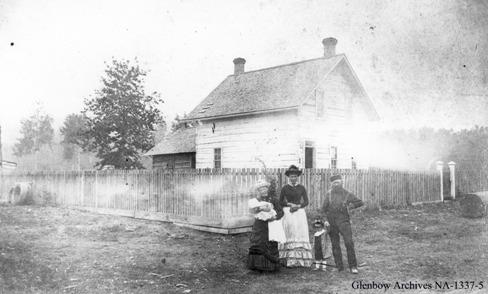
Lac La Biche Convent (1894)
A group of Oblates of Mary Immaculate priests established the Lac La Biche Mission in 1853 near the Hudson’s Bay Company post but moved the mission to the shores of Lac La Biche lake in 1855. The mission can claim many firsts for Alberta including the first printing press, commercial wheat crops, flour mill, and wood sawmill. The convent (erected in 1894) is the oldest building still standing at the mission and has been fully restored. It is also a National Historic Site of Canada.
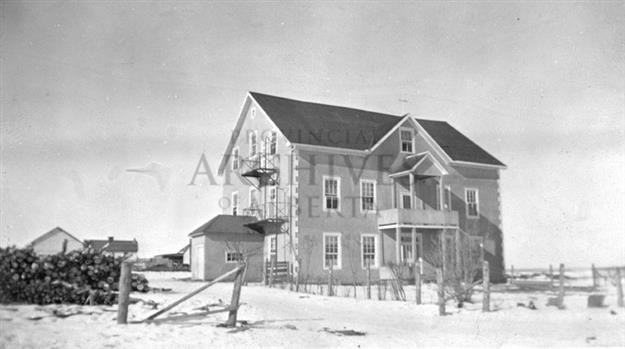
Roland Michener House (1894)
The Michener House was originally built as the Village of Lacombe Methodist Church Parsonage. It remains as the oldest residency in Lacombe today. The house was the birthplace of the Right Honourable Roland Michener, former Governor General of Canada. Michener’s father, Reverend Edward Michener, was the Methodist minister for the Lacombe area, and as such, had taken up residency in the town’s parsonage just north of the church. Today the Michener House is a museum and a Provincial Historic Resource.
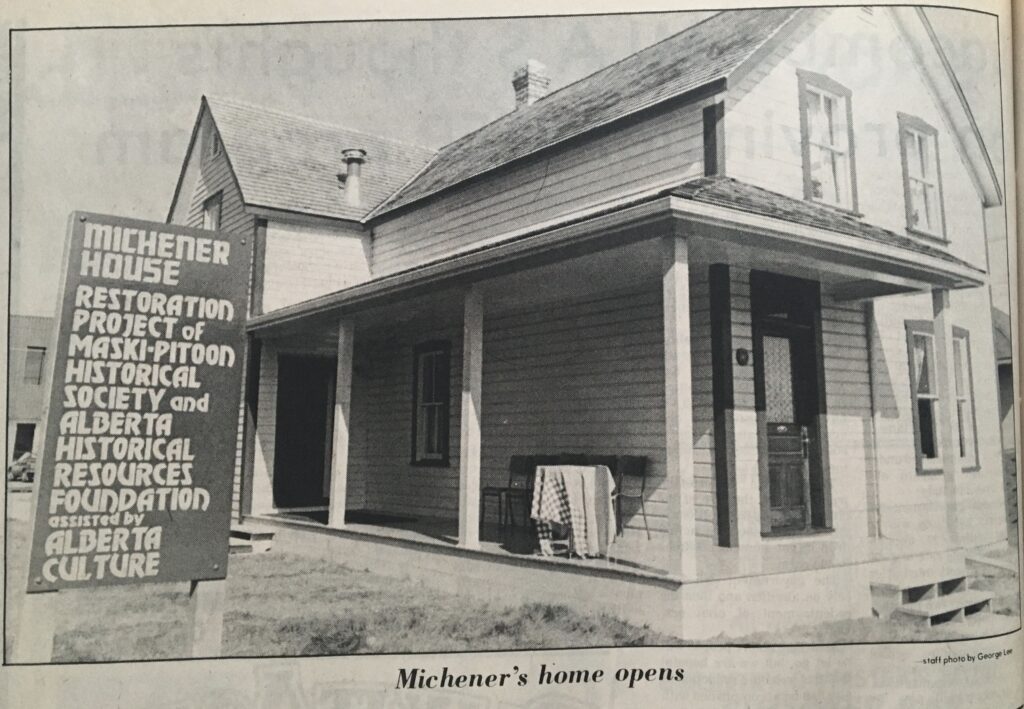
Union Bank (1899)
The North West Mounted Police had established Fort Macleod in 1874 on an island in the Oldman River but ten years later relocated the post to the river’s southern banks due to ongoing spring flooding. A community, known today as Fort Macleod, sprang up outside the walls of the original fort and was eventually incorporated as the Town of Macleod in 1892. As the town grew the need for a more stable financial institution was realized. The Union Bank of Canada opened the first major bank in Macleod in 1897 and then three years later moved into a new two-storey brick building. The Union Bank building still stands at the corner of 23rd Street and 2nd Avenue in Fort Macleod.
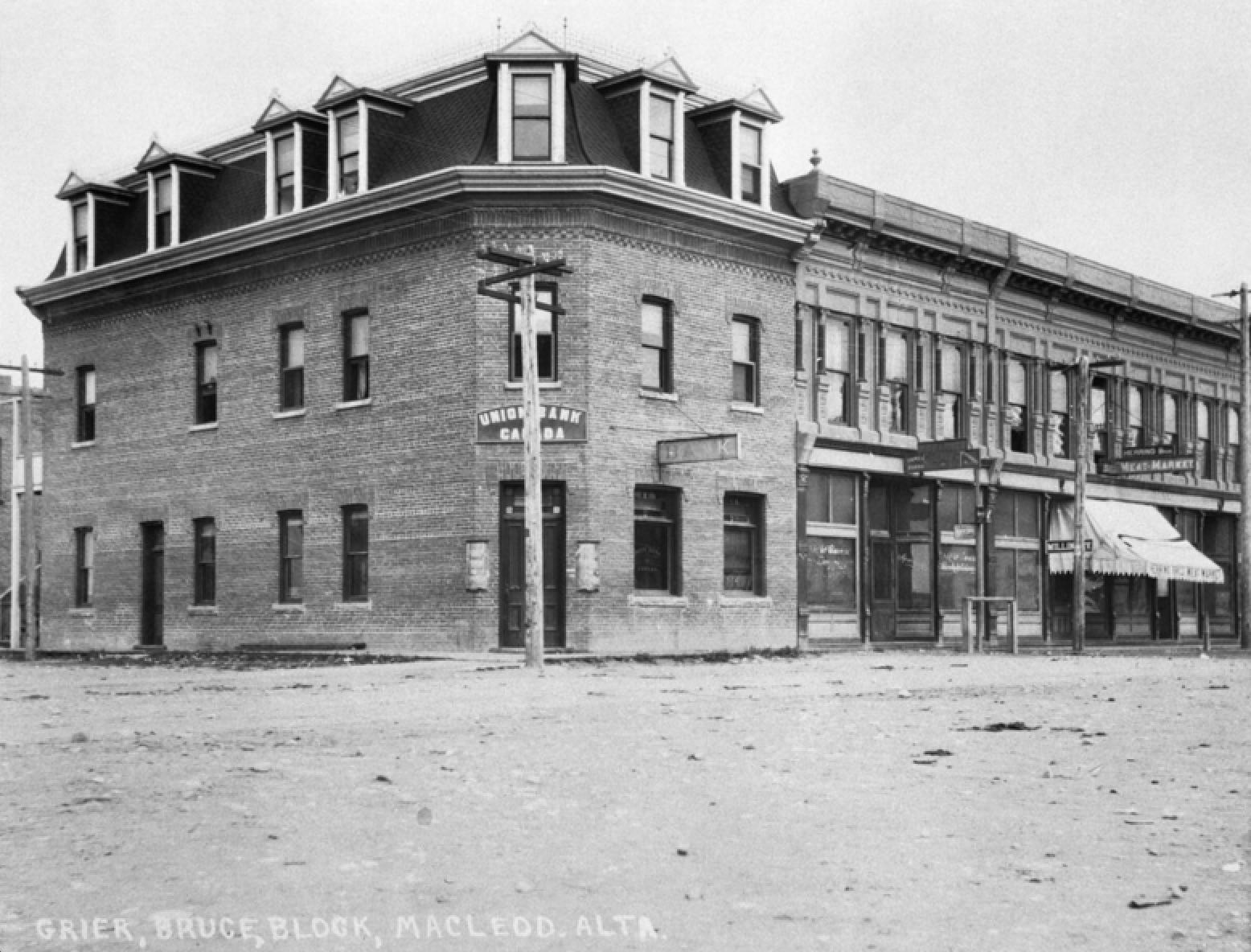
The photos above were collected from Archives Canada, the Provincial Archives of Alberta, and the Glenbow Archives. If you’re interested, additional information can be found for each photograph on their websites. Stay tuned for additional posts featuring historical photos from across Alberta and Western Canada. We’d love to know what you think in the comment section below.




